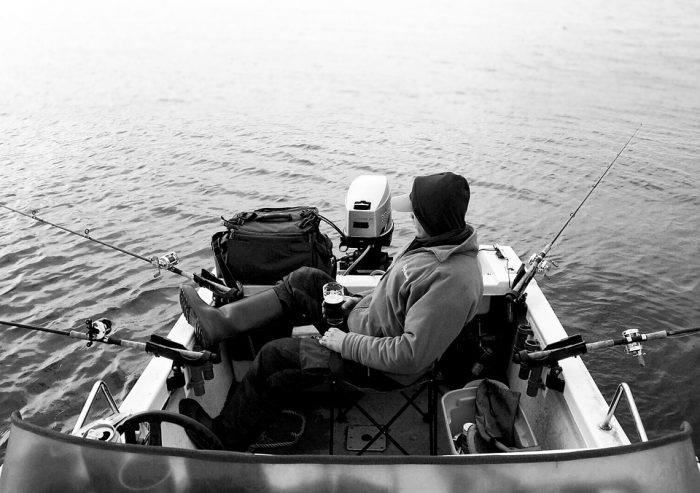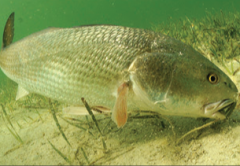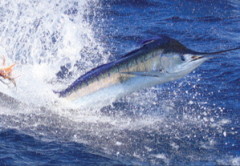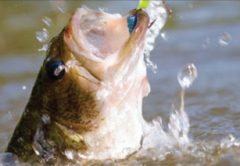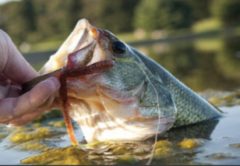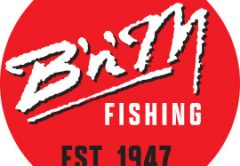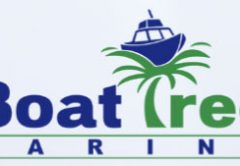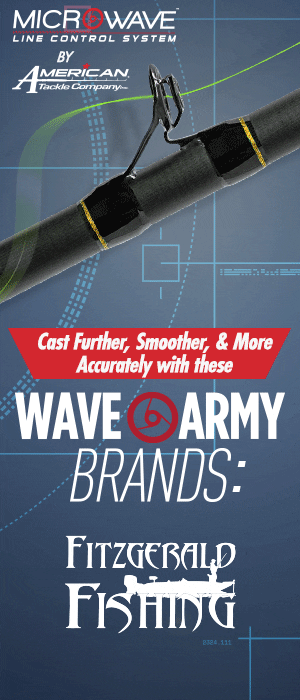Bass anglers who live in Florida are some of the few in our great nation who have the opportunity to fish all year round. For those anglers who are willing to fight a little cold weather, some cloudy blustery days and maybe some chilly rain storms the chance of catching a bass of a lifetime is never better than the winter and early spring months of January to mid-April. Our local surrounding fresh water fisheries rival the some of the best in the country. The St. Johns River & Lake System, Harris Chain of Lakes, Clermont Chain, Lake Toho and Kissimmee Cain of Lakes, Kissimmee River and Lake Okeechobee, Stick Marsh and Farm 13 are among the best “Trophy Bass” producers not just in Florida, in the entire U.S.
This time of the year the bass are in spawning mode. As the fronts are passing through every 7 to 10 days as well as the changing water temperature and the barometer, the bass will leave the deeper water haunts to the available cover near or around spawning areas or flats. Usually the females will be close to the areas where the spawn will take place in the heavier more dense cover. During the next several months and up-coming moon phases anglers will have the chance at catching the heaviest bass of the year. Some females over the 8lb. mark will gain as much as 3lbs. in roe or eggs, as the bigger females will eat large baits as they await the call from Mother Nature. When we have several days of uncommonly cold weather like some of the recent fronts brought us, the water temperature drops well into the low 50 degree range. Bass are cold blooded and will be at the same temp. range, slowing down their metabolism. When a warming trend for several days in a row follows several days of cold weather along with a change in the moon phase to either New Moon or Full-moon, Mother Nature’s spawning-bell will surely be ringing. The big females will move from the dense cover looking for a well prepared bed to lay her eggs. The males will hang around after fertilization of the eggs to protect the eggs and fry from the areas predators.
The recent spraying treatment for water-hyacinths and hydrillia in several of the lakes in Kissimmee Chain has killed both plant species as well as the surrounding grasses. As the plants start to decompose the water temp. around the decaying plants is just a little warmer than the surrounding water. During the recent BASS Southern Open reports of large fish were coming from areas of the heaviest decay. This ugly and dying vegetation is passed by and over looked by most anglers except the local experienced anglers. Sometimes the big girls will tuck right up underneath these floating mats just awaiting their next meal and the right conditions for spawning.
Catching the heavy females requires some patience, usually a heavy 7-1/2 to 8ft flipping stick loaded with 50 to 65lb. braided line, a heavy punch weight of as much as 1-1/2ozs., along with creature bait or some type of plastic craw style bait white or brightly colored so you can see it well. For those of you who have caught a bass over 6lbs. the feeling of that hard thump and a 10ft. grass matt moves as a big girl grabs your bait is like none other! Another method for catching a trophy of a lifetime is by slowing floating or trolling a giant wild shiner of 8” or larger under a balloon or cork right next to the heaviest cover near the spawning araes. Not only are the big girls willing to feed during the spawn, the male “Buck” bass will bite with tremendous aggression at this time of year. Slow rolling large swim bait just under the water’s surface over Kissimmee grass, through small or large lily pads will bring some hard charging males from yards away. Slowly fishing a plastic senko style stick bait or a speed worm will also produce a lot of bites. As the water temp. raises to 58 – 62 degrees, along with the air temp. the top-water bite will be the staple. Plastic frogs, buzz-baits, chatter-baits, devil’s-horse and hard-stick will be extremely productive. Try several presentations until you get a few bites, the fish will let you know whether they like it slow or fast on any given day.
Look for the areas which are best protected for the northeast blows, these areas will warm up the quickest. Find areas with hard sandy and shell bottom in less than 4ft. of water, sometimes as shallow as 12”. The male bass will make their beds by fanning a sandy dished out area in the lakes bottom and in cleaner water can be spotted from several yards away. I carry an air-boat flag with me. Once I spot a bed I will position the flag on the edge of the bed then back away and position the boat to make several fan casts around the bed area, attempting to get a bite. The male bass will be able to pick up a worm or creature bait, remove it from the bed and spit it out while you are watching him without feeling anything at all. Sometimes it takes several attempts to get them to actually eat your offering. Once you find a female on a bed and she is ready to spawn, it may take several attempts to get her to bite as well. Use a bait which is small enough to see, bright or white in color and position your boat with the sun at your back as to allow you to pay close attention to what the bass are doing. If the female is swimming around close to the area where you have located a bed but not hanging right at the bed, be patient, she is just not quite ready. I sometimes tie a cattail in a knot near the bed, tie a piece of colored ribbon to a reed or grass close to the bed as well as marking the spot on my GPS. Take a picture or two both with my phone & mentally to be able to find the bed later that day or in the next few days to follow. The spawning process is short and only takes a few days for the female to do her thing. A good pair of polarizes sunglasses is a must.
So if the chance to fish the warmer days following the on-going cold fronts or even the coldest days of this seasons’ spawn, do it! Remember to slow down, be patient and stay warm, as fishing these cold fronts can bring some Hot Bites!!
Our great fishing state of Florida has the reputation of being one of the best destinations in the U.S. too catch a trophy bass and for those bass anglers who live here year-round, several have a trophy bass to their credit. The FWC has a program currently going on and when a Trophy Bass is caught ( 8lbs. or larger) it can be registered for a certificate and several great prizes. The awards for the “Trophy Catch” program get better when a bass over 10lbs. is caught and even better when the bass is over 13lbs., visit www.trophycatchflorida.com and get registered.

